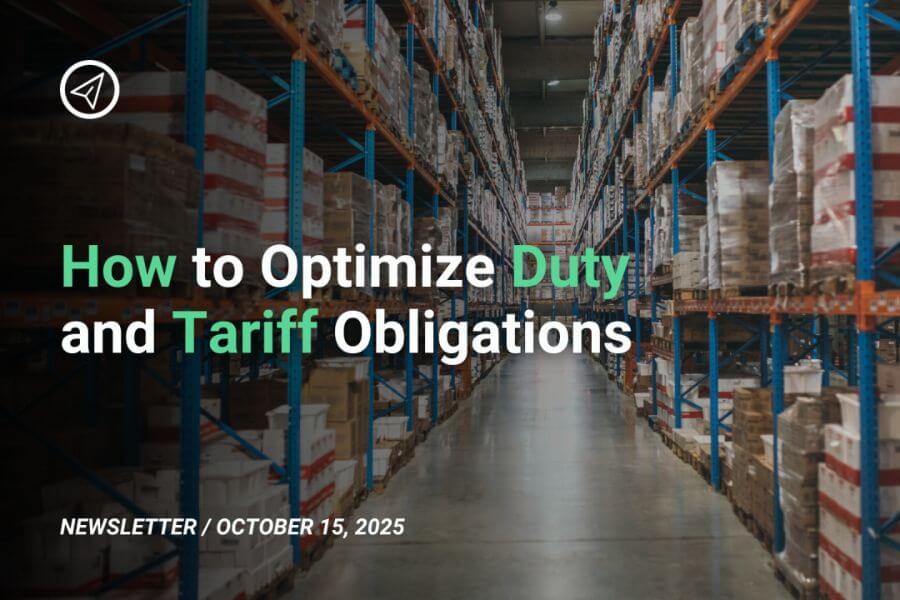Effective August 29, 2025, the U.S. will end its longstanding de minimis exemption for imported packages valued at $800 or less. Under a new executive order signed by President Donald Trump, all low-value imports, regardless of their country of origin, will now be subject to U.S. duties and tariffs.
This marks one of the most significant trade policy shifts in years, with broad implications for ecommerce platforms, online retailers, logistics providers, and global supply chains.
What is changing?
Until now, the U.S. de minimis threshold allowed packages worth $800 or less to enter the country duty-free, significantly reducing costs for overseas sellers and consumers. This exemption has been a cornerstone of cross-border ecommerce, enabling fast, cheap direct-to-consumer shipments from countries like China.
But as of late August, that loophole is closing.
The change applies universally, including for countries previously benefiting from favorable trade terms.
Why this matters
Platforms such as Temu, Shein, and even Amazon’s international sellers have leveraged the de minimis rule to offer low-priced products shipped directly from overseas suppliers.
According to recent figures from the White House Trade Council, de minimis shipments to the U.S. have tripled in volume, from 115 million packages to over 309 million in the past fiscal year alone. Officials argue that this surge:
- Undermines U.S. businesses unable to compete with ultra-cheap imports.
- Facilitates the entry of illicit or non-compliant goods, including counterfeit products, unsafe electronics, and unregulated pharmaceuticals.
- Complicates customs enforcement and overwhelms border inspection systems.
This policy shift is part of a broader realignment of U.S. trade policy, aimed at protecting domestic industries, enhancing supply chain resilience, and cracking down on unfair trade practices.
Similar moves are already being considered or implemented in Canada, Australia, and the EU, where lawmakers are reassessing how de minimis thresholds impact local markets.
What it means for ecommerce and importers
The end of the de minimis loophole will lead to:
- Higher import duties and costs for low-value shipments
- Increased customs paperwork and inspections
- Longer delivery timelines
- Greater pressure to localize inventory and streamline U.S. distribution
Strategic response: Leverage U.S.-based fulfillment centers
For businesses relying on international fulfillment, this is the time to rethink your logistics model. Transitioning to a U.S.-based fulfillment warehouse or third-party logistics (3PL) provider can help you mitigate the impact of rising import costs and regulatory complexity.
Key benefits of a domestic fulfillment strategy
- Bulk import savings: Ship products in consolidated, bulk containers to reduce per-unit shipping and duty costs.
- Faster shipping times: Offer 2–3 day delivery to U.S. customers instead of 7–21 days from international warehouses.
- Improved customs compliance: Centralize import processes, reduce errors, and maintain better oversight of duties and documentation.
- Lower return rates & higher customer trust: Faster delivery and easier returns help reduce refund requests and improve customer retention.
- Scalability and flexibility: Work with a 3PL that can scale operations based on seasonal demand and handle multi-channel fulfillment.
Why work with a 3PL like Simple Global?
A trusted 3PL like Simple Global offers end-to-end support, including customs clearance, inventory management, order fulfillment, and returns processing, all from within the U.S.
With strategically located warehouses and integrated logistics technology, a partner like Simple Global can help:
- Shorten delivery windows
- Reduce landed costs
- Increase customer satisfaction
- Ensure regulatory compliance as trade laws evolve
Click here to learn more about Simple Global.
Click here to explore our global warehouses.
The end of the de minimis exemption is more than a policy change; it’s a signal that cross-border ecommerce must adapt. Businesses that proactively shift to domestic fulfillment models and strengthen their logistics infrastructure will be better positioned to weather the transition and capture long-term growth in a rapidly evolving global trade landscape.





